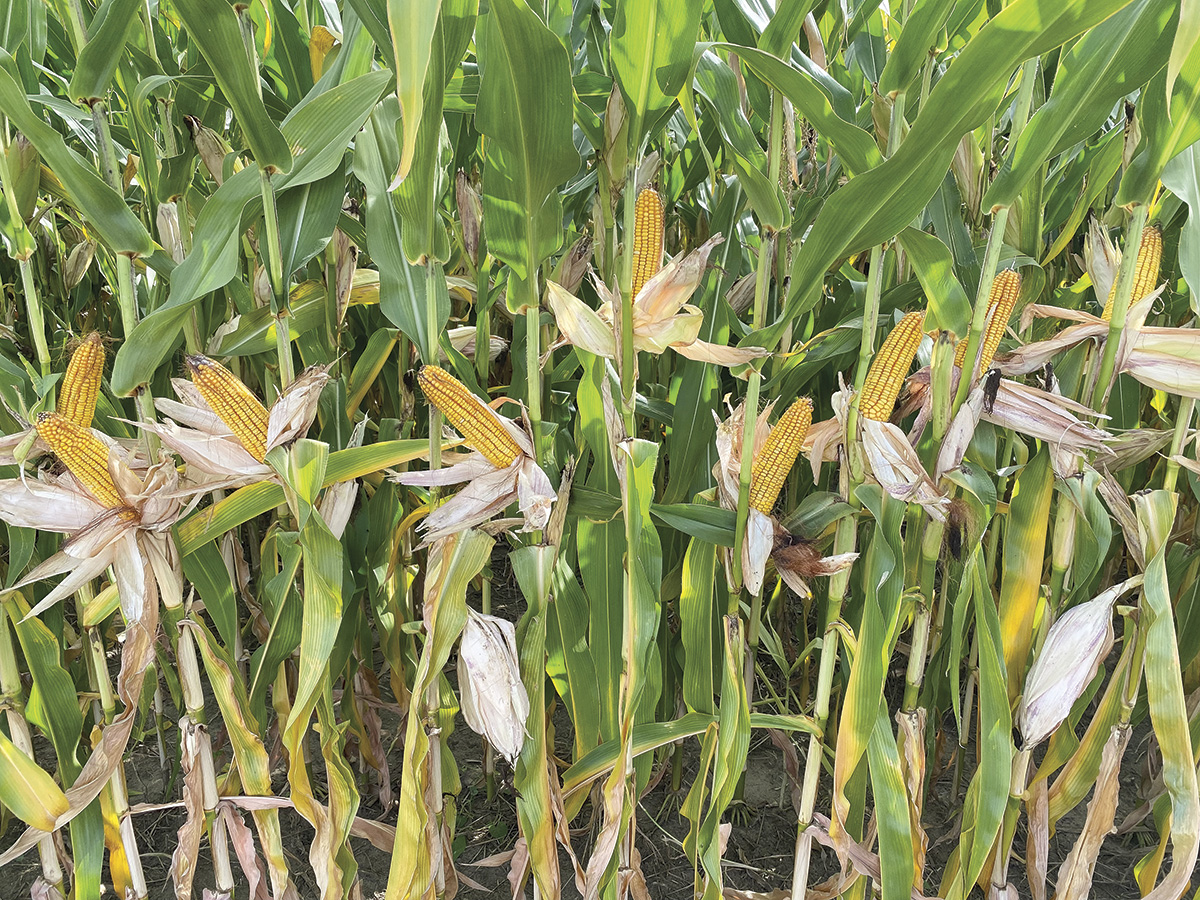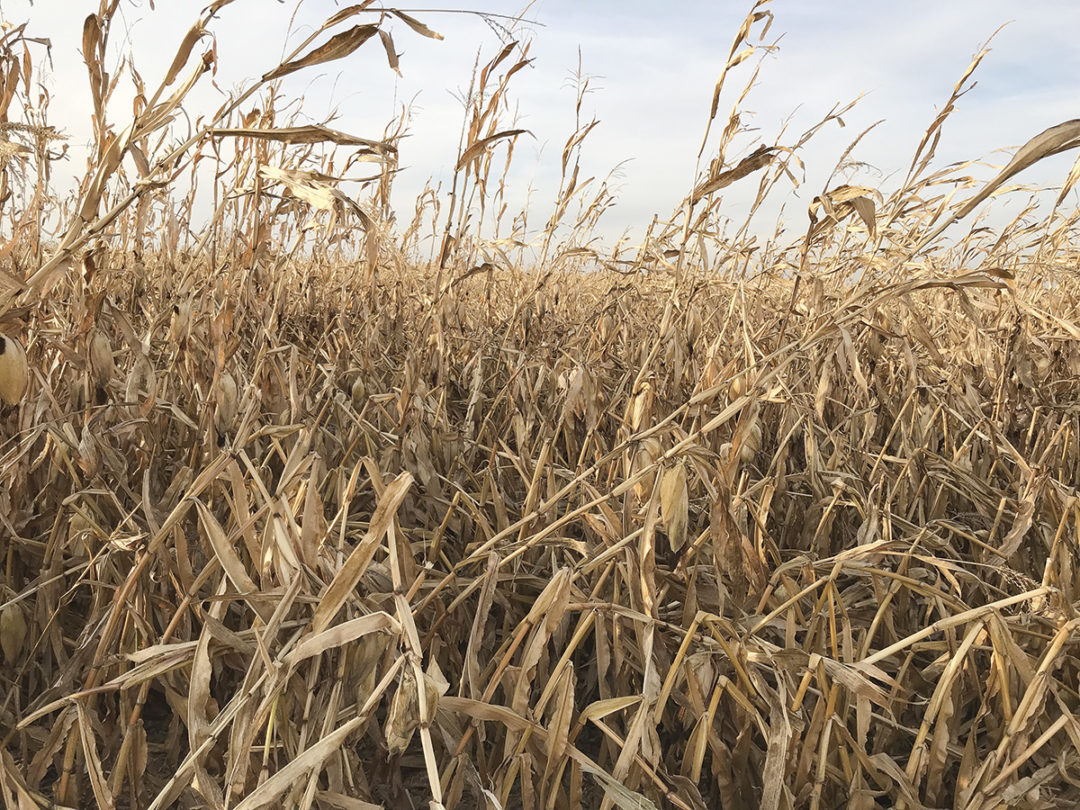Longer-season corn hybrids yield more than shorter-season corn hybrids. This is something we have known for a long time. The reality is that this is not as self-evident as we once thought. The data show hybrids that use the full growing season have the maximum grain-yield potential. Then why do high-moisture corn (HMC) hybrids typically yield better than dry corn grain hybrids? In western U.S. plots, we commonly see HMC hybrids yielding 20 to 30 bushels better than dry corn in the same plot. Pioneer has conducted on-farm research trials that demonstrate an average of 2.37 bushels of grain lost per point of moisture dried in the field. If HMC is harvested at 30% moisture and dry corn at 17%, the 13 points of moisture difference multiplied by 2.37 bushels per point of moisture equals almost all the yield loss.
We have all seen the giant ears on full-season silage corn and thought, “I wonder what the grain yield would be?” Corn grain yields the best when it uses the full growing season in the area it is planted. Planting longer-season hybrids increases the risk of premature death from frost at harvest and the dramatic yield loss associated with it. In addition to this, corn that goes through grain fill during the shorter days of late September reduces kernel depth to accelerate maturity. Silage plots that are harvested for grain a month later typically have average yields for the area, at best.
In another on-farm trial, hybrids from 84 comparative relative maturity (CRM) to 107 CRM were planted in the same plot and all harvested the same day. Averaging yields by CRM over a five-year period show that from 84 CRM to 95 CRM, hybrids improved yield by an average 6.6 bushels per CRM increase in this geography. However, from 95 CRM to 107 CRM, there was no statistical yield gain. This demonstrates that allowing the corn plant to use the entire season results in the best yields and increasing day length adds risk but does not add to yield.
The difference in corn maturity is all before silking. It takes all corn hybrids, regardless of maturity, about 60 days to go from pollination to black layer (mature grain). It’s the number of leaves and the length of time from emergence to pollination that results in different harvest maturities. Heat and drought stress are the primary yield-limiting factors in the West. By planting hybrids of similar maturity but different silking dates, the risk of a short-term heat wave limiting the yield across the whole farm is reduced.
 These ears are close to black layer, which should happen about Labor Day for grain corn hybrids. Photo provided by David Sass.
These ears are close to black layer, which should happen about Labor Day for grain corn hybrids. Photo provided by David Sass.
Corn hybrid maturity should be chosen based on harvest timing and the crop’s end use. For silage corn, we should plant hybrids that are around 10-20 CRM longer than grain corn. The longer maturity hybrids will have more leaves and a larger plant to improve silage yields. However, if harvest is going to take more than a week, a package of silage hybrids should be planted to extend the harvest window across the farm. Shorter-season hybrids should be 20% of planted acres, full-season 60% and long-season for your area the last 20%. This will give harvest equipment time to get the bugs worked out as harvest begins and should maintain the silage moisture until the end of harvest with a minimum of frost risk.
Grain corn growers should have harvest in mind as they choose hybrids for the year. If grain must be 15% moisture at harvest, be conservative when choosing hybrid maturity. Planting longer-season hybrids and hoping for a good growing season will lead to grain corn harvest in March. Grain corn dries to the equilibrium moisture of the environment. If corn grain is not 15% by Thanksgiving, it won’t dry anymore until the weather warms back up. If you have the ability to dry corn grain, then take a bit of risk with your maturity and get the most out of your growing season. Corn should be at black layer around Labor Day to maximize yield.
For HMC that is harvested at 30% moisture, plant a hybrid 10 CRM longer than dry corn. HMC is at the correct harvest moisture when it reaches black layer. The trick is to get the grain to harvest moisture while the corn pit is open and receiving grain. If your corn is too dry at harvest in September, the buyer will delay harvest until the grain is around 15%, and you will not get the harvest and moisture benefits of HMC. If your corn hybrid is too long, it may not get to black layer before the pit closes. Harvest of HMC before black layer can lead to leaving the tips of the kernel stuck in the cob after going through the combine. This can be as much as a 5% yield loss.
The great winter moisture across the area has me thinking we are going to have above-average yields in 2023. Put some thought into what you can do this winter to give yourself the best chance to take advantage of what should be an excellent year.



.jpg?height=auto&t=1713304395&width=285)


